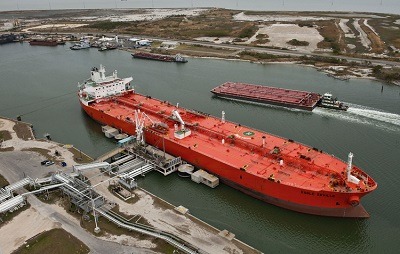Oil prices fell on Wednesday after figures from an industry group showed U.S. crude stockpiles rose last week more than expected, reinforcing concerns that the global supply glut continues unabated.
The front-month contract in U.S. crude futures was down 47 cents at $40.98 a barrel by 0753 GMT. It struck a 2016 high of $41.90 in the previous session before closing at $41.45. The contract has rebounded more than 50 percent since hitting its lowest level since 2003 in February.
Brent crude was 45 cents lower at $41.34, reversing gains in the previous session when it finished at $41.79.
Brent has also surged more than 50 percent since hitting a multi-year low in January of $27.10 a barrel.
“Net supply in the short-term should still be in excess and thus brings us to believe that the current uptrend is unsustainable,” said Phillip Futures analyst Daniel Ang in a note on Wednesday.
The American Petroleum Institute (API), an industry group, said in a report after Tuesday’s oil market settlement that U.S. crude stockpiles rose 8.8 million barrels last week to reach a record high of 531.8 million.
The stockpile growth reported by the API was 5.7 million barrels higher than estimates from analysts polled by Reuters. Official crude inventory data from the U.S. government will be released later on Wednesday.
The official U.S. data is likely to show that oil inventories rose to a record high for a sixth straight week, while oil product stockpiles probably fell, a Reuters survey showed.
“Near-term direction is likely to center on the degree of increase in U.S. stockpiles,” ANZ bank said in a note on Wednesday.
Adding to the glut is the revival of Iranian barrels on the international market after sanctions were lifted in January.
Iran’s crude oil exports have risen to 2.2 million barrels per day (bpd) since sanctions were lifted, an increase of 900,000 bpd, a senior official was quoted as saying on Tuesday.
“Until January we could only export 1.3 million barrels of oil but two months after the (lifting of) sanctions we are exporting 2.2 million barrels of oil per day,” Vice President Eshaq Jahangiri was quoted as saying by the Shana agency.
Iranian flows may also increase as ship insurers have stepped in to plug a shortfall in cover for transporting Iranian oil resulting form the fact that U.S. reinsurers are still restrained by U.S. sanctions, according to officials involved in the initiative.
–
Reuters





